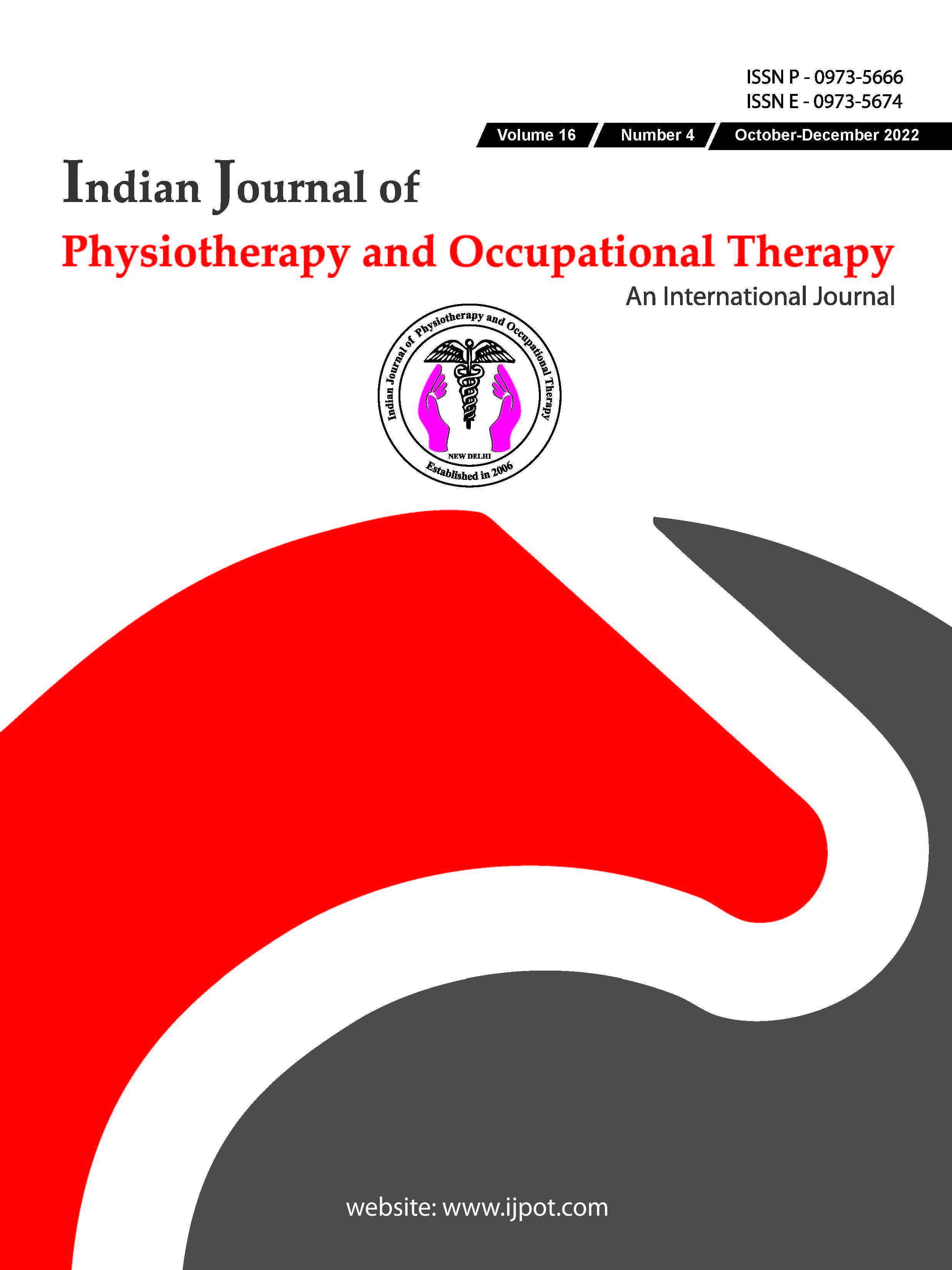A Cross Sectional Study to Identify Perceived Barriers and Facilitators to Physical Activity and Exercise Participation of People with Post Stroke Depression
DOI:
https://doi.org/10.37506/ijpot.v16i4.18712Keywords:
Barrier, Facilitator, Physical activity, Exercise, Post stroke depressionAbstract
Background: Physical activity and exercises after stroke may prevent the disability and stroke recurrence; yet,
psychological impairments like depression may inhibit post stroke exercise and subsequently limit recovery.
Though it remains less clear how best is to encourage exercise uptake by individuals with depression after stroke.
Objective: The objective of this study was to identify the perceived barriers and facilitators to physical activity and
exercise participation among post stroke depressed individuals.
Methods: Descriptive cross-sectional design was adopted using purposive sampling of stroke survivors. Fifty
stroke survivors were screened and identified for depression using HAM-D.25 depressed and 25 non- depressed
stroke survivors have been grouped into active and inactive groups based on exercise and physical activity
guidelines. IPAQ scale has grouped them into physically active and physically inactive based on 3 METs. Using the
EBBS scale, the percentage of positive responses for different domains for benefit and barrier scale was calculated.
The significant difference in the percentage of response in barrier and benefit domains was analyzed using Chisquare
test.
Results: There was significant difference in percentage of response in each benefit domain of EBBS between
depressed and non- depressed active groups. Similarly there was significant difference in percentage of response
in each barrier domain of EBBS between depressed and non depressed inactive groups. Ten major perceived
barriers were reported in depressed non-active group in which exercising cause fatigue (100%) was the highly
reported response.
Conclusion: The study concluded that interventions could be designed for promoting the facilitators more
and addressing the barriers to exercise and time management which is likely to reduce the healthcare costs of
management of stroke.
Downloads
Downloads
Published
Issue
Section
License

This work is licensed under a Creative Commons Attribution-NonCommercial 4.0 International License.








